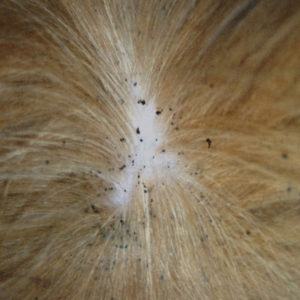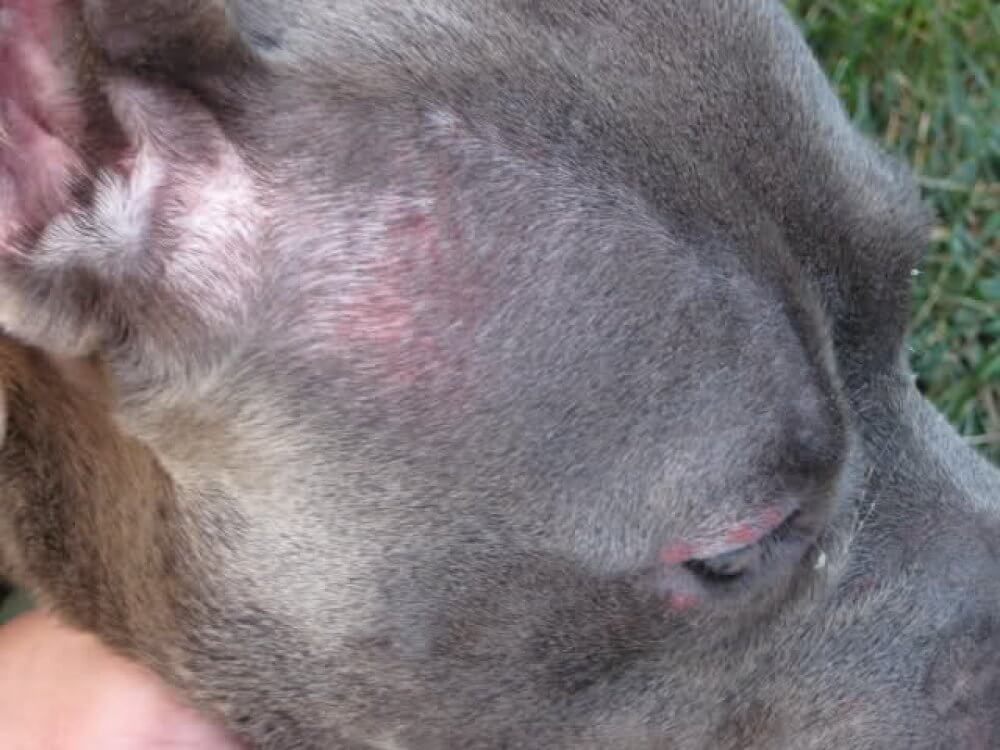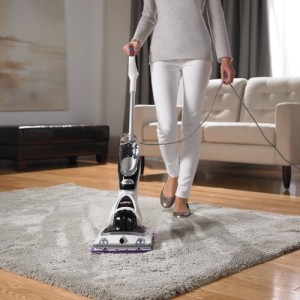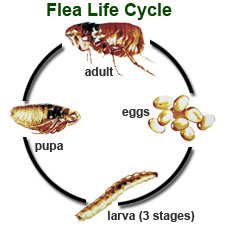Our pets are members of the family that need extra TLC to remain healthy. Most dogs and cats will come into contact with fleas at some point in their lives. It only takes a moment for fleas to jump from a stray visitor to your pet’s healthy fur. All it takes is one to start a colony. If you’re not aware of the problem, it will continue to get worse until there is a full blown infestation. There is a nasty byproduct that is generated by fleas and it’s commonly called flea dirt or poop.
Flea dirt is a problem that many of us live with and we’re not even aware of it. If your pet gets fleas, the solution to killing them is simple. There is a range of effective products that kill fleas and their eggs, but they do nothing about the remaining problem of flea poop that is sure to be left behind. Being aware of the byproducts that fleas generate is important for keeping your environment as clean and healthy as possible. This guide will give you all of the information that you need to know about flea dirt and how to get rid of it.
Contents
What is flea dirt?
Flea dirt is the most obvious sign that your pet has fleas aside from itching and scratching. To put it bluntly, flea dirt is formed by the flea poop that is left behind. The culprits that produce the largest amounts of flea dirt are female fleas because they ingest the largest amounts of your pet’s blood and pass it through their digestive tracts. This is an unpleasant thought at best, but it’s a fact of life that comes with owning a pet. It’s bad enough that your pet has to put up with painful bites and itching, but the residual waste brings on another set of problems.
What does flea dirt look like?



The first signs of this disgusting byproduct may just look like sand or regular dirt on the scalp of your pet. Large clumps may form and become noticeable in your pet’s fur. It is generally easiest to see on your pet’s belly where there is less fur. If you are not sure whether your pet is just dirty or is covered with flea dirt, take a sample and get it wet. If it turns a reddish color, you can be sure that it is flea poop. Without the addition of water, some other ways to tell if you’re dealing with flea dust are to look for a grainy texture with black dots that resemble finely ground black pepper. You may even mistake flea dirt for black sand because of the feel on your fingers. They may also look like tiny black flakes.
Places that flea poop collects
The first place is on your pet’s skin and the surrounding hair. Anywhere a flea crawls, it deposits its’ feces. Your pet’s bed will also be covered with flea dirt whether you can see it or not. Some of the particles are tiny so unless there is a good sized buildup, you may not be able to see it. There is also likely to be flea dirt anywhere that your pet likes to rest. This can include furniture, carpeting, your bedding, the interior of your car and any other areas where your pet has been.
Potential hazards of flea poop
Flea feces can present a health hazard for your pet because they represent the predator who is feeding on the blood of the animal. The residual dirt left behind supplies all of the nutrition needed to perpetuate the life cycle from larvae to adult flea. It adds to the problem of flea infestation. People who are sensitive to allergens may have an asthmatic reaction to flea dirt. In addition, knowing that there is any type of feces on your pet or in your home is grossly unappealing.
Fleas can easily spring from your pet to other areas of the home, especially carpeted areas. If your pet is heavily infested you may notice that people in the house are getting bit by fleas. If there is a flea on you, there is probably flea dirt as well.
How to examine your pet for flea dirt
Begin by checking the belly where there is less fur. Flea dirt is easier to see in more sparsely furry areas. The tail is another area where it often collects. Next, move to the legs and check under the armpits as well. Another area to closely inspect is the inside of the ears. Don’t make your pet uncomfortable while doing this, but give them a good visual inspection. If you see any black clumps on the fur, look them over and if necessary, run the water test to see if it turns reddish brown.
What to do if you find flea poop
If you do find any traces of flea feces then it’s time to take action because the health of your pet may depend on it. One solution is to consult with your preferred veterinarian. Nearly every veterinarian will dip your pet in a solution that will kill the fleas, larvae and the eggs before they hatch. In some cases when infestation is advanced, more than one treatment may be necessary.
If you prefer to treat your pet on your own, it’s a good idea to thoroughly investigate the pros and cons of each product to make sure that it is safe for your particular pet. Avoid those which have been known to cause health problems in animals. You may want to visit a veterinarian supply store or a local pet store retailer to talk to a knowledgeable representative about which product is the most highly recommended.
Why it’s important to get rid of all flea dirt
Because of the fact that flea dirt is the best fodder for hatching eggs and growing flea larvae, it’s important to wipe it out. This is particularly true for areas that your pet likes to frequent. The stuff acts like fertilizer for baby fleas to help them grow healthy and strong. Even the best house cleaners are apt to miss a spot or two. While this might not be a big deal in the long run, why take the chance?
How to get rid of flea dirt
Giving your pet a thorough shampoo will make you feel better in the short term. Total removal of all flea poop will take some thought and effort. It’s a two pronged process that involves removing the current waste matter and preventing it from forming again. This is the part that can become frustrating. It only takes one rogue flea to start the process all over again so diligence during the first round can save you a lot of work. If this is your first major go round with battling fleas, you’ll appreciate the following tips. They’re intended to help you purge your pet and home of fleas to lessen the chance of their return.
If the infestation is minor then you may be able to conquer the flea bites on human issue with a single treatment. Most people find that this is not generally the case and here is the reason. Killing adult fleas isn’t the difficult part. You can kill every adult flea living on your dog with a single shampoo. There are two additional issues that are the most common complaints that pet owners make. Killing the rest of the fleas in the yard and home and killing the emerging flea pupae can take a little longer. Some pet owners have spent upwards of four months battling the problem. Each case is different and hopefully yours will be resolved much more quickly.
Options for killing fleas on your pet
There is a huge selection of flea killing products on the market. Generally a trip to the local vet is the fastest solution for killing fleas, but it can be expensive. If you decide to forego this expense, here are some options that you can use instead.
Flea combs
Because some pets are sensitive to pesticides, an option to bring immediate relief is to use a flea comb. These specially designed instruments are very good at removing live fleas from your pet’s coat. They don’t solve the problem completely, but are a good first option. Before you begin, get a bucket of hot soapy water to wash the fleas out of the comb and drown them. It’s best to go over the entire coat of your pet because fleas do move around. The flea dirt will still be present and so will unhatched eggs so further treatment will be required.
Oral flea pills
These products are fairly effective in working from the inside of your pet outwards. The pros are that they keep working until all adult fleas and hatch lings are dead. The drawback is that your pet may have some side effects and it takes a lengthy regimen to wipe out all of the fleas. Oral medication for fleas isn’t recommended for puppies because of the associated side effects. This option should only be chosen if your pet is in good health.
Flea shampoo
Flea shampoo kills adult fleas on your pet but it is usually only good for a single day. This type of treatment is more effective when it’s combined with another type such as oral treatment or spot treatment. A drawback to using shampoo is that it must be allowed to sit on your pet for a minimum of ten minutes. It’s hard enough to get a pet to cooperate for a quick dunk.
Flea collars
Most flea collars release chemicals that repel fleas and ticks, but some pets are sensitive to them. They should never be used on puppies or kittens because of the risk to their health. The most effective collars are the ones that release the treatment into your pet’s skin for all over coverage.
Flea powder
Good quality flea powder helps to repel fleas for up to a week. They also kill them upon contact. They can be used on either cats or dogs. Care should be taken to avoid getting the powder into the pet’s eyes or nose.
Flea dips
Flea dips are longer lasting than shampoo or powder. They are faster to administer than shampoo, but the major drawbacks are that they pose a greater health hazard for pets and most of them have an unpleasant and lingering odor. Pets have a tendency to lick the dip from their fur which means that they are ingesting the active ingredients. While most do not have problems as a result, some who are more sensitive may become sickened.
1. Best spray to use on your pet
2. If you want to kill fleas from your carpet or similar areas, we’ve found that this works best:
- Carpet Powder
- Safety Gloves
- Recommended Dust Respirator or at least this one.
3. If you have big infestation, you’ll need best fogger available (case of 6 recommended).
Spot on treatments
Spot on treatments only require a small drop applied between the shoulder blades. They are applied monthly and have shown great effectiveness at killing fleas and preventing re-infestation.
Natural treatments
The use of essential oils is an alternative flea treatment that some pet owners may prefer. While this method works for some pets, it is generally less effective than the use of pesticides. Additionally, pets who are have sensitive skin may have a reaction to the oils.
These are the treatments options that can help to rid your pet of fleas. It is rare that a single treatment will solve the problem unless you catch it at the very beginning. Repeat treatment as necessary until there is no sign of flea dirt on your pet.
Purge the home and yard of flea dirt
Next, we turn to the environment. This includes all areas that your pet has occupied recently. Fleas, their eggs and flea dirt must be removed to prevent re-infestation. If you have carpeting in your home, then vacuum it vigorously. This may be a good time for a light shampoo or carpet treatment to kill any flea eggs or larvae that may be lurking in the fibers. You can use an IGR (insect growth regulator) to prevent flea eggs from hatching.
Sleeping areas
You should also treat all areas that your dog has slept or sat on. This includes all furniture, bedding and vehicle upholstery. If your dog sleeps on your bed at night then you’ll also need to launder the sheets and bedding. For good measure, the mattress may be vacuumed to remove any tiny specs that you can’t see with the naked eye. don’t forget the couches and chairs as well. Even if you don’t allow your pet to sit on the furniture, you never know when they will steal a nap there when you’re not looking or away.
Tip for killing fleas on bedding and pillows
Fleas cannot survive under extreme heat and dry conditions. This makes your clothing dryer a perfect tool for cleaning your bedding and pillows. Just turn the setting all the way up and make sure that pillows and bedding reach a fairly high temperature. This is the recommended treatment for pillows that may become damaged if they are exposed to moisture.
Yard treatment
Fleas can also survive for a length of time in your yard during the warm months. Use an insecticide to treat areas of the yard that your dog frequents to make sure that there is no chance of reinfection. If it’s winter time and the temperatures reach freezing or below, you’re home free and no treatment is needed.Door mats and throw rugs
Fleas can also hide in your throw rugs or door mats. This includes those inside and outside of your home. You can tumble them at high heat in a dryer and it will kill fleas. It won’t get rid of the flea dirt though. In order to do this, you’ll need to wash and rinse them.
How to prevent fleas from getting a foothold
Prevention suddenly becomes a more interesting topic when you’ve had to go through the process of ridding your home of fleas. With just a few extra steps to your regular cleaning regimen, you can more easily prevent another infestation and here is how.
Make the yard inhospitable during warm weather
Fleas need a warm and moist environment to thrive. This is why they can multiply in your yard in warm weather. Irrigation and summer sun give them the warmth and moisture that they need. Spray the yard every so often with an insecticide and you’ll make the grass an unwelcome place for fleas and other pests. Remove any lawn clippings or brush so there is no fodder for fleas to hatch and thrive. Believe it or not, they do fairly well in grass cuttings and old weeds.
Vacuum carpets regularly
When carpets and rugs are kept clean and vacuumed, fleas have a tougher time surviving. A good vacuum can remove adults, eggs and larvae before they have a chance to multiply. Don’t forget the throw rugs. If you’re not partial to the idea of washing and drying them, just hang them out in direct sunlight. The heat will help get rid of any fleas that might have hatched in them. Also pay attention to furniture upholstery. A quick trip around the house with an upholstery brush can make a big difference.
Keeping your pet flea free
Wash your pet’s bedding regularly. This is one of the most effective ways of preventing a stray flea from multiplying into a colony. If your pet rides in the car with you, take a few moments to vacuum the seats and carpeting.
Avoid exposing your pet to strange animals that may be infected. This is how the majority of pets get fleas. Stray dogs venturing into the yard can bring fleas that quickly jump from one animal to the other. It doesn’t take long for fleas to spread and start multiplying.
Check your pet for flea dirt regularly. Early detection can help you to get rid of fleas before they get a major foot hold on your pet and in your home. At the first sign, begin treatment because these are the times when a single treatment is the most likely to take care of the problem.
Final thoughts
Flea dirt is nasty and it’s a sign that your pet has a serious problem with fleas. Now that you know what to look for, you are less likely to suffer from a serious infestation. If you are currently dealing with an overabundance of flea poop, you know what to do about it. Yes, it’s a disgusting problem but unfortunately, one that most pet owners experience at least once in their lives. Take swift action and use your best judgment along with the information that you’ve learned. Cover all of the bases and rid your pet and home of flea dirt. It can be a long process, but you’re armed with the knowledge that can get you and your pet back to the clean and comfortable living that each of you deserve.










Leave a Reply